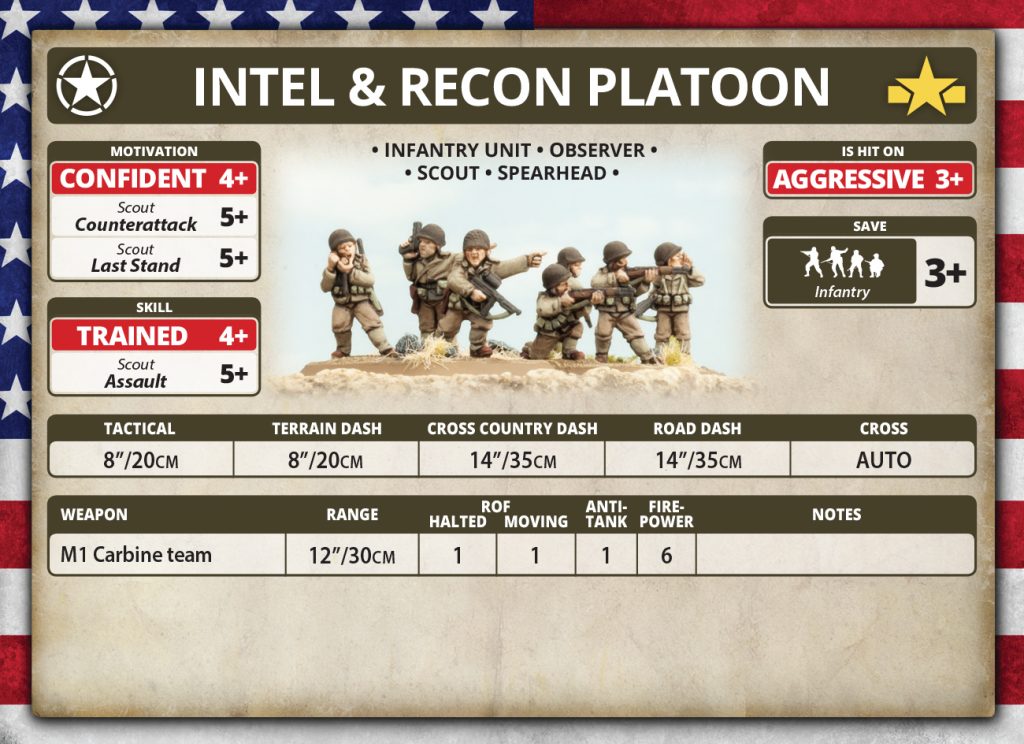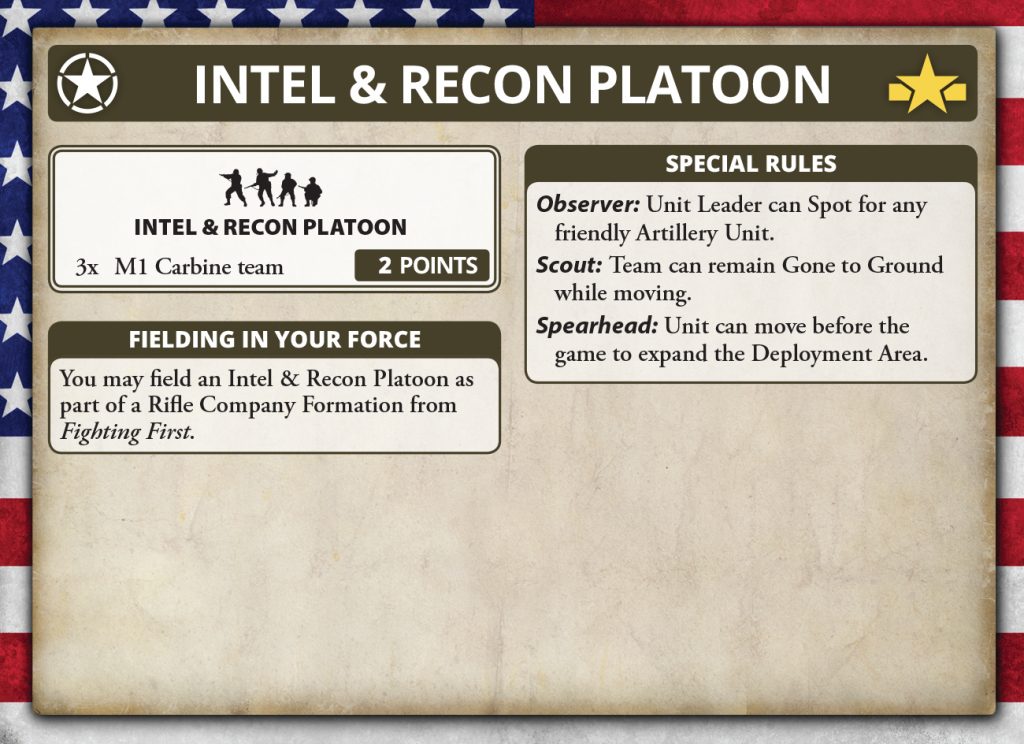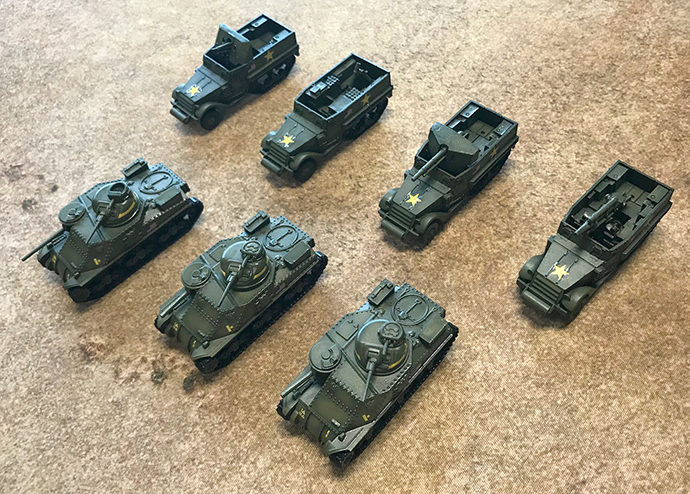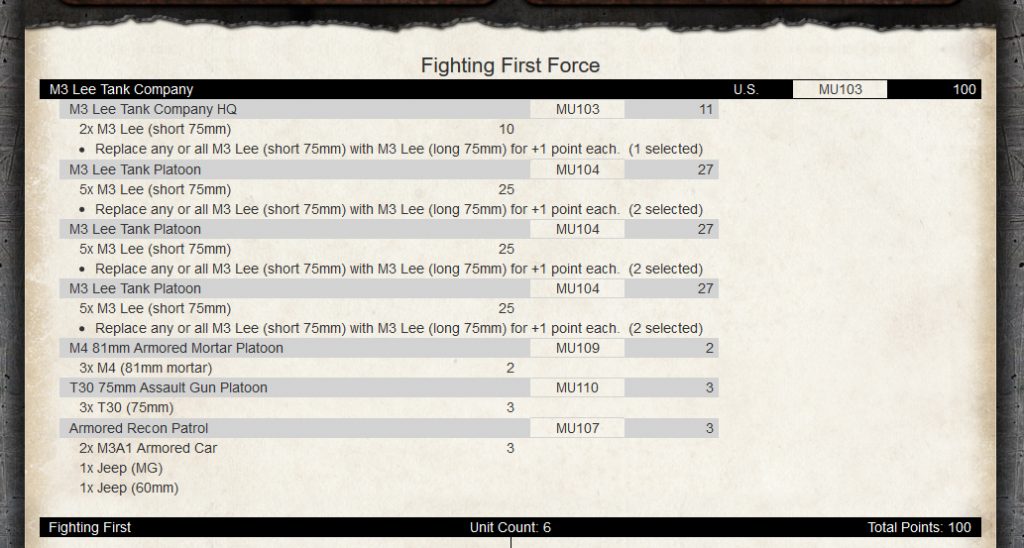with Jim Westerfield
From the mid-1930s until the late 1950s, U.S. Army infantry regiments in each division contained an Intelligence and Reconnaissance (I&R) platoon as part of the regimental headquarters company. In 1939, the I&R platoon Table of Organization & Equipment (TO&E) authorized 10 infantrymen to make up the unit. This was expanded to 18 infantrymen in 1940 and the platoon TO&E, in 1941, was authorized to include 1/4-ton vehicles (Jeeps).
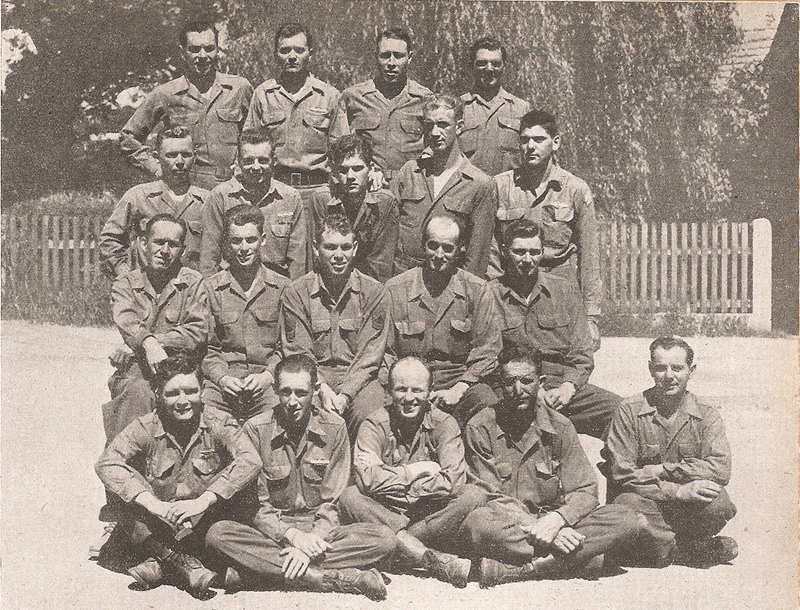
The I&R platoon consists of a platoon headquarters and two reconnaissance squads. Platoon headquarters consists of the platoon leader, platoon sergeant, driver, topographic draftsman, radio operator, and scouts and observers. Each squad consists of a squad leader, assistant squad leader, radio operator, drivers, scouts and observers. The platoon headquarters had one jeep while each squad had three jeeps, some of which carried radios.
The soldiers that made up the platoon are all infantrymen, given additional training by the regimental S-2, as there was no institutional military intelligence school at the time. Training of the platoon members focused on operating as scouts along with map and aerial photograph reading, conventional signs, military symbols and abbreviations, sketching, oral and written reporting, scouting and patrolling, theory and practice of observation, camouflage and the art of concealment, and the collection of information.
Individual equipment for members of the I&R platoon include standard infantry small arms and equipment, though individuals in the field often supplemented the standard issue as they saw fit. Each squad also had a prismatic compass, a 20-power monocular telescope and/or a pair of field glasses, and a watch. The platoon members carried notebooks and writing materials and colored pencils to pass along information and mark maps.
War Department FM 7-25, Headquarters Company, Intelligence and Signal Communication, Rifle Regiment, October 7, 1942 states:
“The principle mission of the regimental intelligence platoon is to serve as the special intelligence agency of the regimental commander, for the collection, recording, evaluation and dissemination of information, under the supervision of the regimental intelligence officer (S-2). The platoon is also charged with counterintelligence measures and surveillance. Actual operations of this platoon are conducted under the immediate control of the platoon leader. He may receive his orders directly from the regimental commander, S-2, or S-3. During training periods, it may be required to assist the S-2 in conducting intelligence and counterintelligence instruction within the regiment.”
The main function of the I&R platoon was to be the ears and eyes of the regimental commander. FM 7-25 describes the principle functions of the platoon as:
- Gathering detailed information about the enemy and terrain in locations that are not readily accessible to the rifle companies of the battalions or regiment.
- Assemble, evaluate and distribute information and intelligence gathered by the platoon and by subordinate, higher, or adjacent friendly units.
- Provide early warning to the regiment on the presence, disposition, composition, and approach of enemy forces of all types. Operate well in advance of the regiment in order to gain and maintain contact with the enemy.
- Maintain contact with reconnaissance and security formations of other, larger formations that are operating forward or to the flanks of the regiment.
- Regain lost contact with adjacent, attached and assigned friendly units. Locate and maintain contact with the flanks of an enemy force when contact is gained by dismounted combat elements of the regiment.
- Reconnoiter avenues of approach, routes, river crossings and complex enemy obstacles. Search suspicious, dominating and critical areas along the route of march to identify possible ambush sites, defended roadblocks, route classification and contaminated areas.
- Establish and operate 24-hour observation and listening posts.
- Conduct dismounted patrolling to the front, flanks, and rear of the regiment when terrain or enemy situation precludes the use of mounted patrolling.
- Assist the regimental S-2 at the command post or at a tactical observation/tactical command post by maintaining the intelligence situation map, and/or keeping an intelligence log, taking and preparing reports, messages and sketches.
- Carry out such counterintelligence measures as directed by the regimental commander or S-2. Provide instruction on the subject to other units of the regiment. Search undefended or captured towns and villages and captured enemy equipment and positions.
Some other missions performed by the platoon that were not specifically included in standard doctrine were;
- Liaison between regiments of the division.
- Messenger duties between battalions of the regiment.
- Escort and security for the regimental commander as he moved forward of the main command post.
- Serving as radio-telephone operators for regimental command in dismounted offensive operations.
- Marking of route of march for the regiment and providing guides at traffic control points.
- Accompanying a combat or reconnaissance patrol conducted by rifle platoons or companies from subordinate infantry battalions of the regiment in order to report on tactical progress of intelligence acquired directly to the regimental commander.
- Conduct economy of force operations on a flank of the regiment in order to provide early warning and prevent the regiment from being surprised.
While being trained infantrymen, thus capable of getting involved in direct fighting against enemy forces, the primary duty of the I&R platoon is to support the front-line infantry and regimental commander by carrying out the above type of missions and not get directly into a firefight. The MTOE did vary during the war but we will go with the 1942 organization.
In Flames of War:
The I&R platoon is an additional platoon in the Rifle Company formation diagram. To model the platoon, we will use the organization from V3 North Africa with a command carbine team of 3 figures and 2 carbine teams of 4 figures. I used the dismounted armored recon platoon to build the unit. As the pick of the litter they are a little better trained than most of the rest of the guys in the regiment. Very useful for calling in fire. For points we will use the rifle platoon as a benchmark. We will be adding recon and spearhead skills, but in compensation we will have worse Rally and Counter Attack ratings. At slightly less than one point per rifle team we, rounding up we get 1 point for the platoon.

